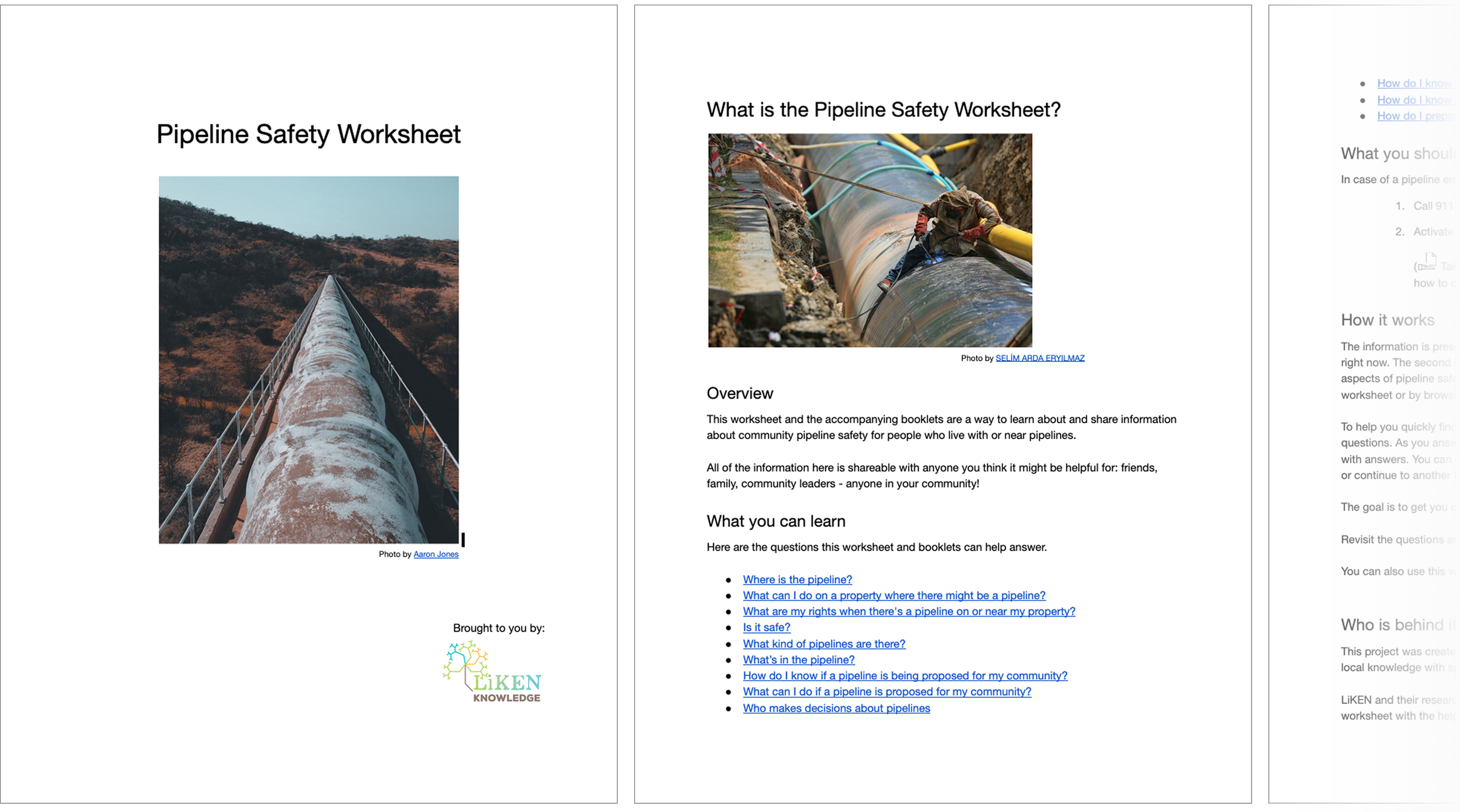Design and research strategy for rural pipeline safety awareness
More than 2.6 million miles of gas and hazardous liquid pipelines crisscross urban and rural communities across the United States. Few communities are aware of pipelines or the complicated state, federal, and voluntary safety requirements that are in place to prevent harm to life and the land. LiKEN and Trimtab worked together to define a human centered design project to understand what is needed for community engagement in pipeline safety.
To start, Trimtab and LiKEN met with members of a community living near pipelines in Georgia and learned about their experience with pipeline safety, and about their community. Trimtab dove deep into pipeline safety information and knowledge, gathered and organized over years by LiKEN. We noticed that much of the information about pipeline safety we could find uses confusing language, and online, there are even more confusing user experiences. We listed and collectively assessed prior community pipeline safety engagement projects, and noted what worked, what didn't, and why. We designed a plan to co-create an idea for a pipeline safety toolkit to answer the questions communities have about pipelines and make getting the important answers easier.
Using this plan, LiKEN, the community in Georgia, and Trimtab created the toolkit, or workbook as we called it. It was iterated and improved several times, and delivered for further improvement with other communities living near pipelines. Along the way, LiKEN picked up some human centered design practices from Trimtab, and are using them in a new project.


